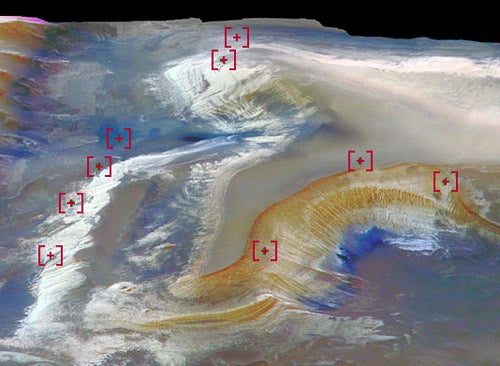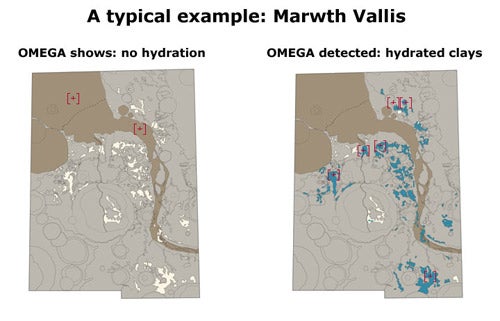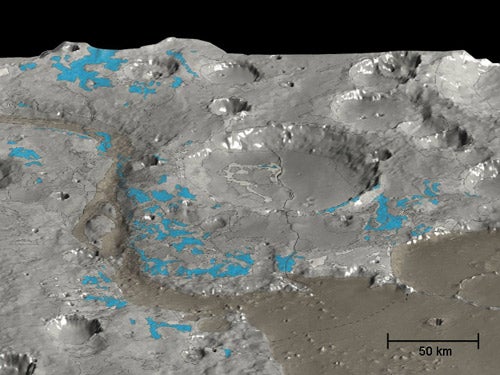The European Space Agency’s (ESA) Mars Express orbiter quietly and consistently contributes important information to our growing knowledge of the Red Planet. At the American Geophysical Union (AGU) meeting last week in San Francisco, ESA scientists announced Mars Express’ OMEGA instrument has discovered evidence of past water on Mars’ surface.
Mars Express’ visible and infrared mineralogical mapping spectrometer, called OMEGA, found deposits of clay minerals and other phyllosilicates. This is the first time an orbiting spacecraft has detected deposits created by exposure to large and long-lasting non-acidic liquid water.
OMEGA had previously found patches and outcrops of hydrated sulfate salts speckled throughout Mars’ surface and exposed by either erosion or meteor impacts. These features support the Mars Exploration Rovers’ findings that some places on ancient Mars had liquid water on or immediately beneath the surface. But this water seems to have been mixed with sulfuric acid — which greatly lowers water’s freezing point.
According to Wesleyan University’s James Greenwood, Mars’ sulfate salts contain thousands of times more phosphorus than the salts of Earth’s oceans. This abundance of phosphorus, combined with the knowledge that living things pull phosphorus out of Earth’s oceans, suggests that Mars’ acidic water baths contained few or no living microbes.
However, OMEGA’s discovery suggests the liquid water that formed the phyllosilicates would have been hospitable for life to evolve in, provided there was enough of it and it lasted long enough.
The clay mineral deposits and newly exposed outcrops exist only in ancient surface terrain dating from Mars’ Noachian era — its first 800 million years. During this period, the planet had a dense carbon-dioxide atmosphere whose pressure would have allowed liquid water to exist. The atmosphere might also have generated enough greenhouse effect, despite the cooler young Sun, to thaw some of Mars’ surface ice, and the newly found clay deposits support this idea.
By contrast, the sulfate deposits OMEGA found often lie in younger surface left over from Mars’ volcanically intense Hesperian era, which ended somewhere between 2 and 3 billion years ago.
Mars contains a large amount of subsurface water ice, as well as ice at its polar caps. As Nicholas Tosca of the State University of New York points out, water-formed minerals in martian meteorites found on Earth suggest this deeply buried water is free of the sulfuric acid formed by atmospheric processes during the Hesperian era. If this is true, martian microbes that evolved during the Noachian era could still survive in this underground water ice.












